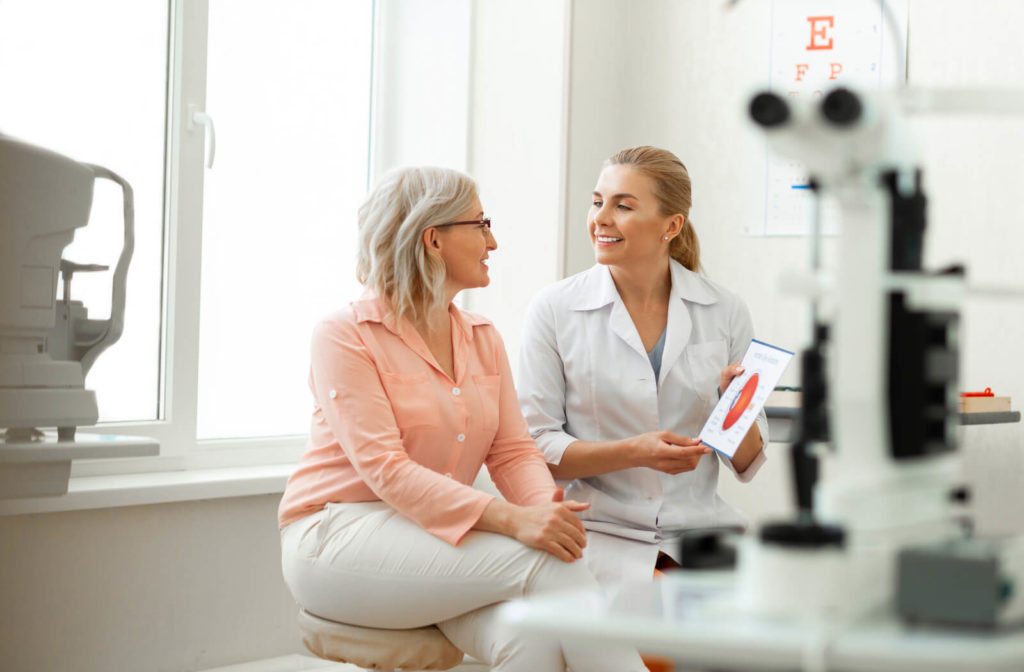When scheduling an eye exam, it’s natural to wonder what to expect. An eye exam is a crucial step in ensuring eye health and maintaining good vision. Whether it’s your first visit or a regular check-up, understanding the process can help ease any concerns. In Lake Forest, the eye exam experience often starts with a greeting from a friendly receptionist. This sets the tone for a calm and organized session. Next, a skilled assistant will guide you through preliminary tests. These tests measure your eye pressure and check your visual acuity. Then, you will meet with Kathleen Andersen , OD. She will perform a comprehensive examination of your eyes. This includes checking the health of your retina and other eye structures. The visit usually concludes with a discussion about your eye health and any necessary prescriptions or treatments. Knowing what to expect can make the experience more comfortable and informative.
Initial Checks and Tests
Upon arrival, the initial stage involves basic checks. These tests determine the current state of your vision and eye health. Here are the three common preliminary tests:
- Visual Acuity Test – This measures how well you see at various distances using an eye chart.
- Eye Pressure Test – Also known as tonometry, this test checks for signs of glaucoma.
- Refraction Assessment – This determines the correct prescription for glasses or contact lenses.
These assessments provide a baseline understanding of your eye health and are essential before the comprehensive exam begins.
Meeting with the Optometrist

After the initial checks, you will meet with the optometrist. This is where the detailed part of the exam occurs. Kathleen Andersen, OD, will conduct the examination. This includes looking into the health of your retina, optic nerve, and other vital structures of the eye. The main components of this examination include:
- Slit-Lamp Examination – It allows a close look at the front part of the eye for signs of disease.
- Retinal Examination – Also known as ophthalmoscopy, this inspects the back of the eye.
- Pupil Dilation – Drops are used to expand the pupils for a better view of the internal structures.
Each step ensures a thorough understanding of any issues or changes in your eye health.
Understanding Your Results
After the examination, Kathleen Andersen, OD, will discuss the findings with you. This conversation is both informative and reassuring. It helps you understand the current state of your eye health and any actions needed. Here is a simple comparison of what potential outcomes might mean:
| Outcome | What It Means | Next Steps |
|---|---|---|
| Normal Results | Your eyes are healthy, and no changes are needed. | Schedule routine exams as advised. |
| Prescription Change | A change in your vision correction is needed. | Order new glasses or contacts. |
| Detection of Eye Condition | Signs of a condition like glaucoma or cataracts are present. | Discuss treatment or management plans. |
This table simplifies what different outcomes from your exam might entail.
Tips for a Smooth Eye Exam Experience
![How Much Does LASIK Eye Surgery Cost? [2024 Update]](https://d2b5ex288jkka2.cloudfront.net/images/posts/_1920xAUTO_crop_center-center_none/is-lasik-covered-by-insurance.jpg)
Being prepared can make your eye exam more efficient. Consider these three tips:
- Bring your current glasses or contacts for reference.
- Know your family eye health history for any relevant information.
- Write down any questions or concerns to discuss with the optometrist.
These steps ensure you maximize the benefits of your visit and leave with a clear understanding of your eye health.
Conclusion
An eye exam is a straightforward yet comprehensive process crucial for maintaining healthy vision. By knowing what to expect and how to prepare, you can approach your appointment with confidence. Whether it involves routine care or a new prescription, your eye exam in Lake Forest with Kathleen Andersen, OD, will provide the clarity and guidance needed for your vision care. Understanding each step and its purpose ensures that your experience is both informative and reassuring.
